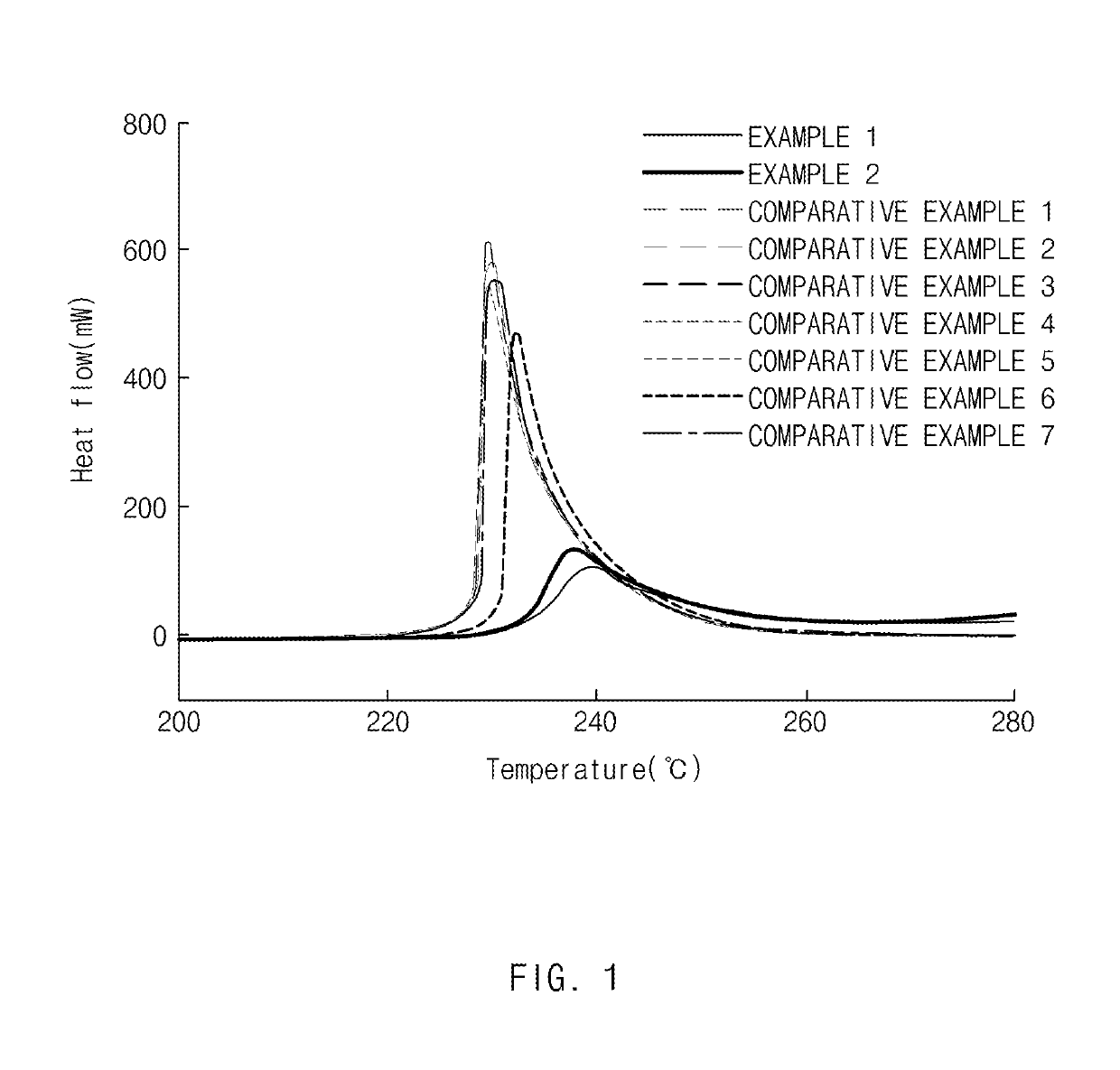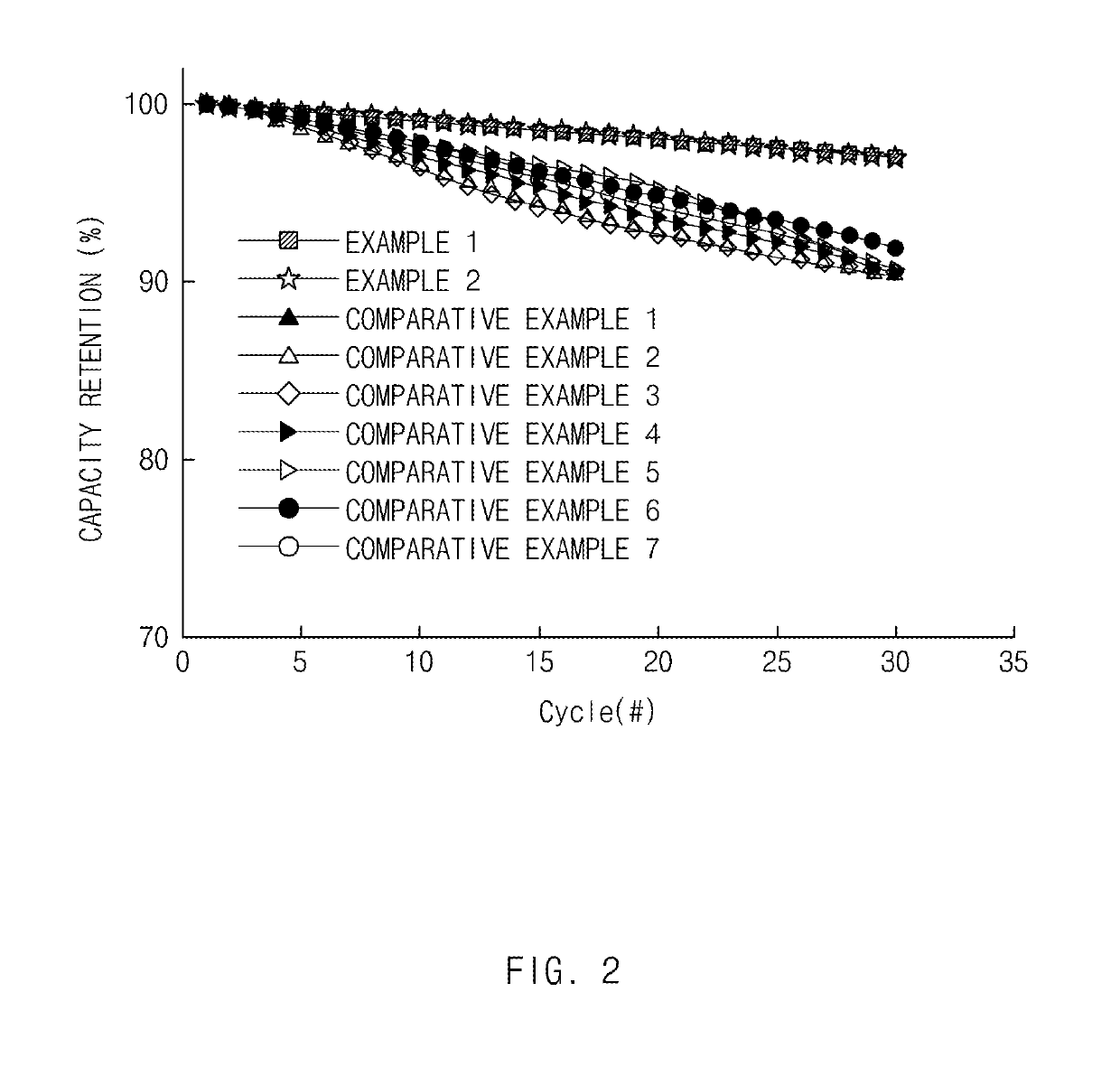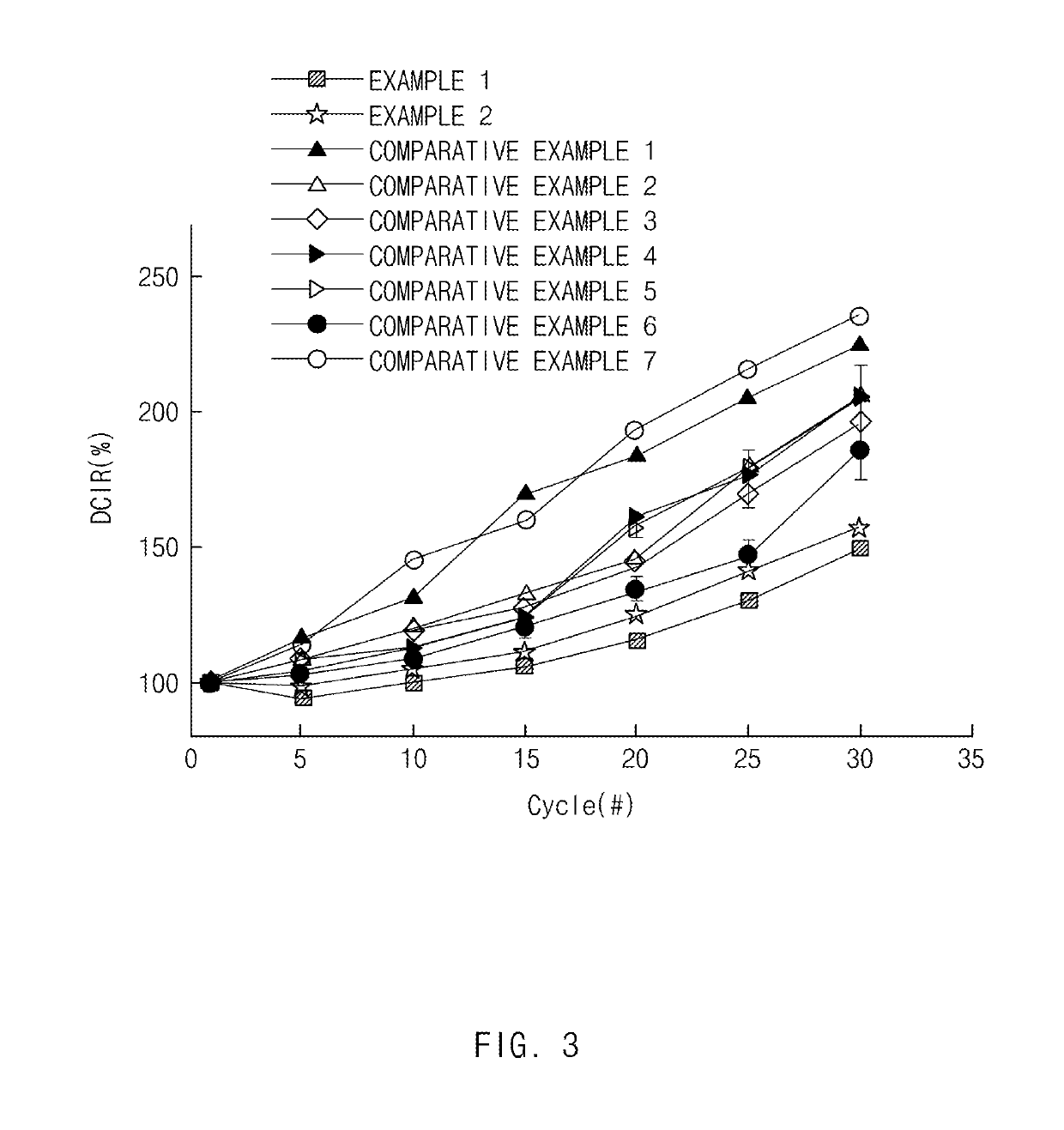Positive Electrode Active Material For Secondary Battery, Manfuacturing Method Thereof, And Secondary Battery Including Same
a secondary battery and active material technology, applied in the direction of batteries, sustainable manufacturing/processing, nickel compounds, etc., can solve the problems of poor thermal stability of licoosub>2 /sub>as a power source for applications, limited use of a large amount of licoosub>2 /sub>as a power source, etc., to achieve excellent high-temperature stability, improve structural stability, and excellent capacity properties
- Summary
- Abstract
- Description
- Claims
- Application Information
AI Technical Summary
Benefits of technology
Problems solved by technology
Method used
Image
Examples
example 1
[0093]300 g of lithium transition metal oxide (Li(Ni0.86Co0.1Mn0.02Al0.02)O2) was added to 240 mL of pure water, stirred for 30 minutes, rinsed with water, and filtered for 20 minutes. The filtered lithium transition metal oxide was dried in a vacuum oven at 130° C. and then subjected to sieving.
[0094]Thereafter, the rinsed lithium transition metal oxide was subjected to a high-temperature heat treatment in an oxygen atmosphere having an oxygen partial pressure of 95%. At this time, the high-temperature heat treatment was performed by elevating the temperature to 700° C. at a rate of 5° C. / min for 2 hours and 15 minutes, performing heat treatment at 700° C. for 3 hours and 40 minutes, and then performing cooling for 2 hours and 30 minutes.
[0095]Next, H3BO3 in an amount of 1.0 wt % based on the B content is mixed with the high-temperature heat-treated lithium transition metal oxide, and the mixture is subjected to a coating heat treatment at 300° C. for 5 hours in a dry air atmospher...
example 2
[0096]A positive electrode active material was prepared in the same manner as in Example 1 except that during the high-temperature heat treatment, the temperature was elevated to 600° C. at a rate of 4° C. / min for 2 hours and 20 minutes, heat treatment was performed at 600° C. for 3 hours and 40 minutes, and cooling was performed for 2 hours and 30 minutes.
experimental example 1
s
[0104]The positive electrode active materials prepared in Example 1 and Comparative Example 1 were subjected to XRD analysis using Bruker AXS D4 Endeavor XRD, and the crystallite, the crystal density, the cation mixing of Ni cations in the lithium layer according to the analysis are shown in Table 1. In addition, the BET surface area was measured using BELSORP-mini, and the results are shown in Table 1.
TABLE 1CationCrystalBETmixingdensityCrystallitesurfaceProcess(%)(g / cm3)(nm)area (m2 / g)Example 1Before1.04.7731810.27rinsingRinsing1.44.7571821.51High-1.14.7681730.33temperatureheattreatmentCoating1.04.7681540.32heat-treatmentComparativeRinsing-1.44.7221590.68Example 1Coatingheattreatment
[0105]Referring to Table 1 above, in the case of Example 1 in which the high-temperature heat treatment was performed according to the present invention, the amount of cation mixing was reduced, the crystal density was increased, and the BET specific surface area was reduced as compared with Comparati...
PUM
| Property | Measurement | Unit |
|---|---|---|
| temperature | aaaaa | aaaaa |
| temperature | aaaaa | aaaaa |
| temperature | aaaaa | aaaaa |
Abstract
Description
Claims
Application Information
 Login to View More
Login to View More - R&D
- Intellectual Property
- Life Sciences
- Materials
- Tech Scout
- Unparalleled Data Quality
- Higher Quality Content
- 60% Fewer Hallucinations
Browse by: Latest US Patents, China's latest patents, Technical Efficacy Thesaurus, Application Domain, Technology Topic, Popular Technical Reports.
© 2025 PatSnap. All rights reserved.Legal|Privacy policy|Modern Slavery Act Transparency Statement|Sitemap|About US| Contact US: help@patsnap.com



